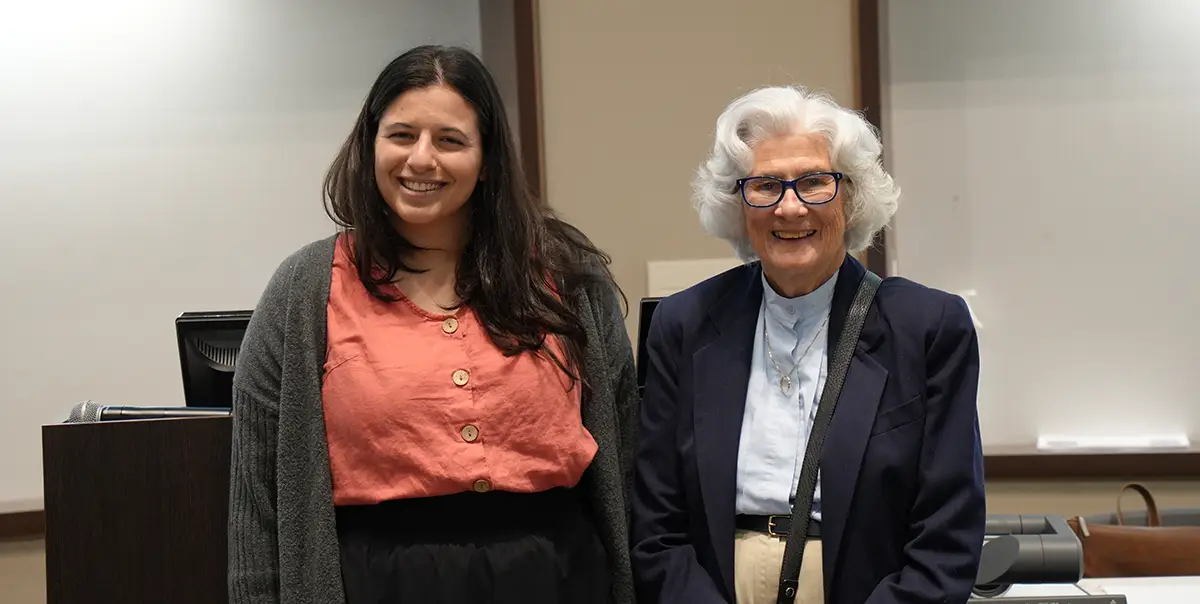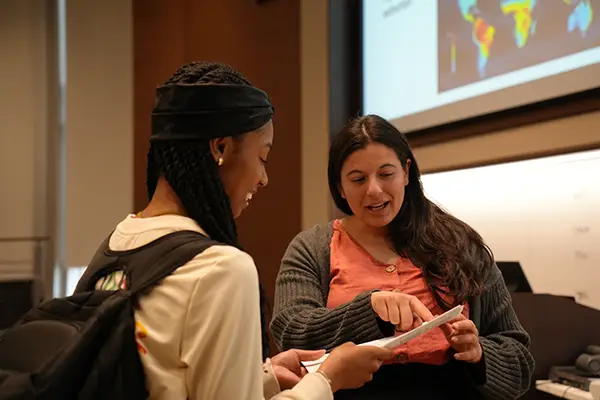The Mamantov Legacy

by Jane S. Gulley
Maggie Mamantov enters her lecture hall fast and purposefully, distributing graded quizzes and queuing up the slides. Her skirt flaps over the beetles tattooed on her leg, emblems of her successful PhD defense. There are 200 people waiting to hear her, none more rapt than my seat partner, who whispers, “Maggie loves to teach, like I did. We both like to grab ‘em with a new idea!”
Charmaine Mamantov, chemist, published scientist, 89-year-old grandmother of nine—(eight of them women in science) and emerita faculty member, is here for Mamantov’s lecture on organismal and ecological biology. It’s the fruition of a family legacy.
Charmaine Bienvenu Mamantov came to Knoxville in 1961 with her late husband Gleb.
“UT was the answer to my husband’s and my dream to go into academia,” Charmaine said.
They visited Gatlinburg on their 1956 honeymoon and returned for Gleb’s appointment to the Department of Chemistry. They researched batteries and molten salt chemistry.
“I was good with instruments,” Charmaine said. “We did research before computers. We used an oscilloscope and an X-Y paper recorder to collect data. I still remember the first computer-controlled instrument in the lab, where you could erase the analysis and do it another way.”
Charmaine graduated from Our Lady of Mercy girls’ Catholic high school in tiny St. Martinville, Louisiana, the valedictorian in a class of 12. At LSU, where she met her future husband, she was usually the only woman in her chemistry classes.


“No one wanted to work with me as a lab partner,” said Charmaine, who taught her first college class as a senior. “It was ironic—for three years I had been considered an oddity who didn’t belong there, but then they asked me to teach the lab. I was terrified. The class was full of football players. One of them was Billy Cannon, who went on to win the Heisman Trophy.”
Gleb Mamantov took his wife’s ambitions seriously. A native of Latvia who spent his teens in a displaced persons camp after World War II, he headed the UT Department of Chemistry from 1979 until his death in 1995. Gleb edited multiple books and articles and secured three patents. Charmaine, as his research partner, had her name on several books, papers, and a patent. In 1976 she earned a UT doctorate in education, and she taught freshman chemistry with tireless verve.
“I loved to see a kid learn something that they thought they couldn’t get,” Charmaine said. “I had students who didn’t have chemistry taught at all in their high schools!”
During a 44-year career, Charmaine embraced new technologies such as computer-based grading and the SmartBoard. She’s now an adept iPhone user, and during Maggie’s lively 50-minute lecture she correctly answers an in-class poll about trophic cascades down the food chain. She retired at the age of 70 in 2005.
In contrast to viewing Knoxville as a dream city, Maggie Mamantov thought it was a good place to escape. She received her BA in biology and history from Grinnell College where she was a member of Phi Beta Kappa.
“When I started looking at graduate schools, UT’s program stood out,” Mamantov said. “Knoxville is a great place to live as an adult, and the teaching community in the Division of Biology is great.”
Maggie Mamantov’s doctoral research in ecology and evolutionary biology centered on the dung beetle, an insect whose behavior (burying the excrement of larger fauna) plays a crucial role in the ecosystem. She was the first to document dung beetles for the All Taxa Biodiversity Inventory in the Great Smoky Mountains, working in the park for months and braving a bear that shredded a tent (fortunately not with her in it).
Now a lecturer in her second year, she helps her students find research positions and apply for National Science Foundation grants. A reflective practitioner, her next goal is to collaborate with colleagues to design curricula and test effective instructional methods.
“My primary goal is to show students the variety of biology and evolutionary concepts. I want them to be curious about the natural world.”
Along with teaching, the Mamantov legacy includes financial support. Charmaine has given to UT for more than 40 years, notably to the Department of Chemistry, which is looking to replace the aging Buehler Hall.
“UT gave my husband and me a career where he could do both teaching and research, and I could do that also, and raise three children,” Charmaine said. “I was grateful.”
Maggie Mamantov echoes that appreciation.
“As it says in my PhD dedication, my grandmother made me and other women realize that science was possible.”







